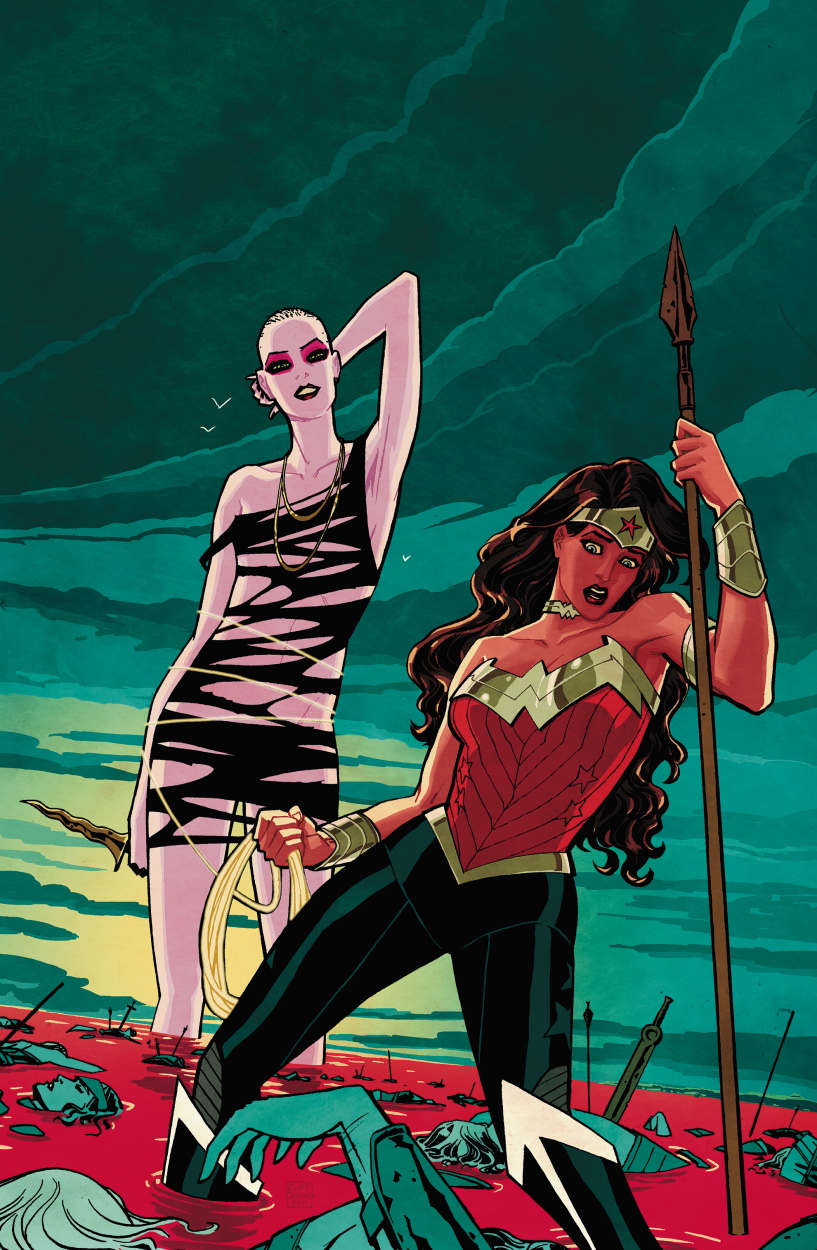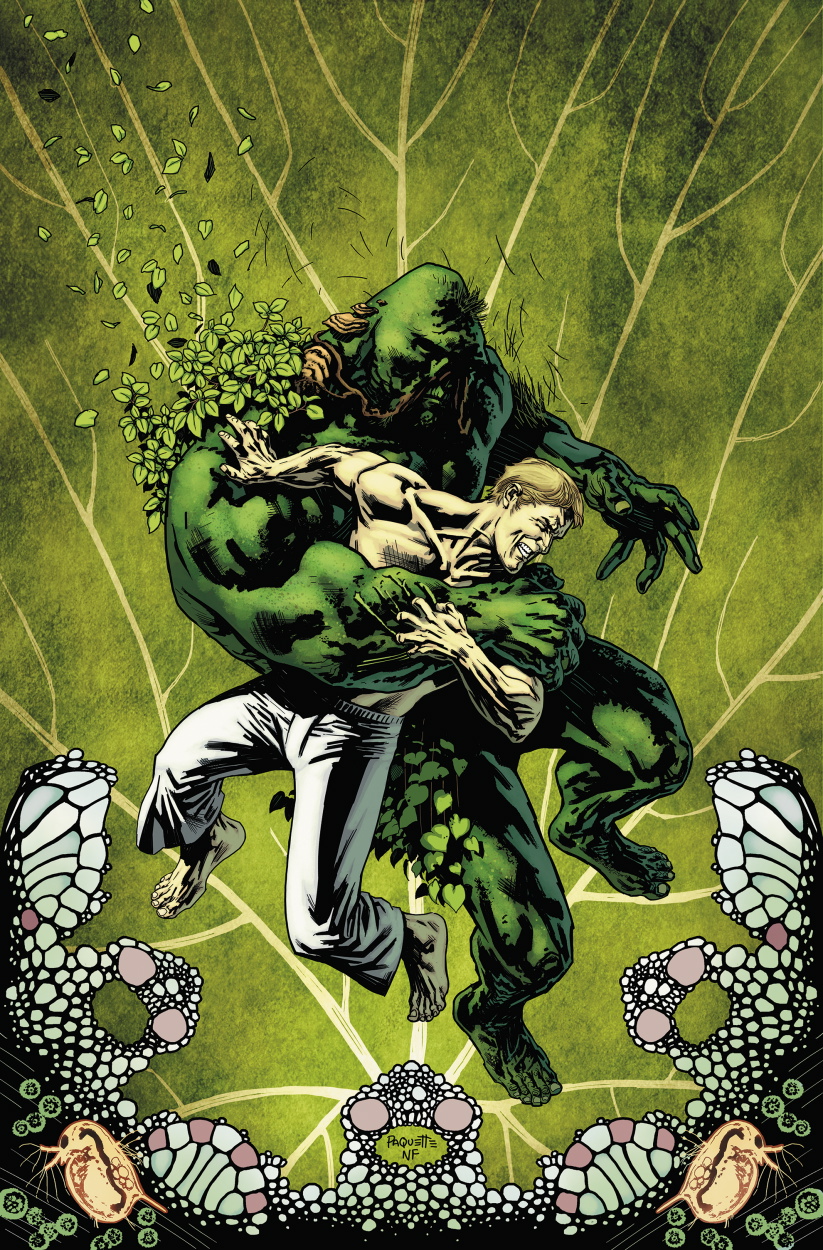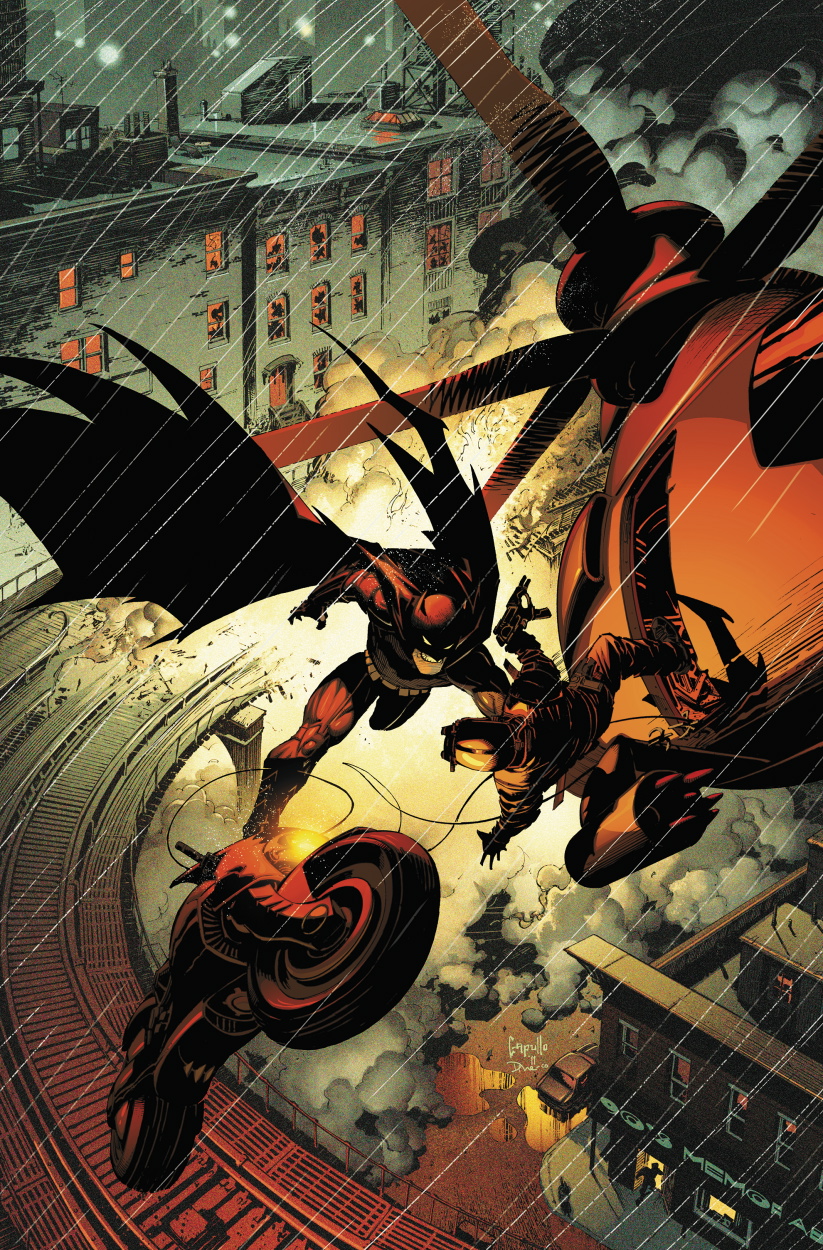I’ve spent all summer prognosticating about the quality of the September relaunch books for the new DC Universe. I’ve read every interview, talked to retailers, and even had a chance to speak with some of the writers and artists involved with the relaunch online and at the recent Baltimore Comic-Con.
Now it’s time to actually read the comics.
I’ll be picking up every first issue from DC this month, and I’ll report back here on Tor in weekly installments, comparing my predictions to the reality of what’s between the covers on those number one issues.
Really, though, my work on the Guide to the New DC Universe wasn’t about predicting the quality of the first issue of each series. It was about looking at the body of work by the creative team along with the history of the character, and considering what the future might hold for this line-wide relaunch. I was thinking more about the first five or six months of the new DCU in an attempt to offer some context and suggestions for readers who may not be following the comics industry as closely as I have, but I will certainly be able to get a better sense of how accurate my speculations were, based on what we see in the opening issues.
The only new DCU comic so far is Justice League #1, which I’ll discuss as part of my look at next week’s comics, once I have more to compare it with, but I do think it’s worth taking the time and reflecting a bit on the big picture right now, particularly since I spent so much time—40,000 words worth of it—talking about each individual series.
One aspect of the relaunch that I completely ignored in my Guide posts was the day-and-date digital distribution. It’s a significant component of DC’s strategy this fall, as every one of their new comics will not only be available through direct market comic book shops, but also digitally through Comixology (or the DC app, powered by Comixology) on the day of release. Though all the major comic book companies have dabbled with digital distribution for years, and even tried out some day-and-date releases, this move by DC is a game-changer.
It is the first serious commitment to the digital format, in an industry that relies on direct market comic book shops for its existence. That puts all the companies in a difficult situation, and they’ve acted with tentative steps because of that. Since their weekly cash flow is almost completely determined by pre-order sales through Diamond distributors, based on orders placed by individual comic book shops across the country, it’s impossible for companies to make any aggressive moves toward digital, for fear of alienating comic shop owners and jeopardizing their revenue stream.
DC has made some promises of a digital storefront and some kind of beneficial relationship between brick-and-mortar retailers and Comixology, but, really, what they’ve done is to basically say, “we are not going to limit ourselves to a weekly comic shop audience,” and if the retailers don’t like it, DC seems willing to face the consequences, knowing full well that the retailers aren’t likely to suddenly stop ordering DC comics, just because digital competition has appeared.
 Yet, DC’s actions aren’t quite as bold as I’m making them sound, because if they truly wanted to maximize digital sales, regardless of the potential damage to the direct market retailers, they wouldn’t price their digital comics at $2.99 or $3.99 each. They clearly want to placate the retailers by pricing the digital and print versions at the same dollar amount, even though DC has announced that a month after release, the digital versions will drop in price by a buck, and everyone who has ever used Comixology knows that they frequently run 99-cent sales on digital comics.
Yet, DC’s actions aren’t quite as bold as I’m making them sound, because if they truly wanted to maximize digital sales, regardless of the potential damage to the direct market retailers, they wouldn’t price their digital comics at $2.99 or $3.99 each. They clearly want to placate the retailers by pricing the digital and print versions at the same dollar amount, even though DC has announced that a month after release, the digital versions will drop in price by a buck, and everyone who has ever used Comixology knows that they frequently run 99-cent sales on digital comics.
So, really, DC is hedging its bets, digitally. They are making the comics available online for the same price as the paper versions, which won’t cause many current readers to flock to a new format. But it will open the possibilities for new readers, maybe readers in other countries, or readers who have storage space issues in their tiny apartments, or readers who just want the convenience of a simple download to their tablet devices.
It does seem to mirror what has happened with other media over the past decade, which is what worries retailers. They’ve seen music stores and video stores go out of business over the years. Few buy CDs any more, and less and less of us buy or even rent DVDs or Blu-ray discs. We download that stuff, or stream it to our computers, our phones, our televisions. There is little doubt that digital has transformed the music and movie industries, and retailers in both of those areas have suffered.
It seems that day-and-date digital for comics is just mirroring that same trend we’ve seen before.
But there are two fundamental differences that make comics different. First, comics are inherently tactile in a way that music and movies are not. The same thing is true for books, and the growing popularity of ebooks is probably a better model for what we might see with digital comics than .mp3 downloads or Netflix. On the other hand, comics, unlike ebooks, don’t translate well to a new visual format, because the entire page is a narrative unit and the individual panel is a narrative unit. It’s frozen, spatially, in the way that a book is not, since the font size can change and the meaning of the book remains the same.
Cut up the panels into individual images, as with Comixology’s “Guided View” or shrink the page to fit the smaller iPad screen and the comic becomes something different.
The second thing that makes comics different than music and movies, and its something that it shares with ebooks, is that, with Comixology, you don’t actually download the comics. For your $2.99 or $3.99 you are merely paying a licensing fee to read that one comic on your device as long as the company wants you to have it, or as long as the company is still in business. Comixology can pull a comic right from your collection, or at least restrict your access so you can’t read it, as if you never “bought” it in the first place, and they have already done that to some customers when an issue of Ultimate Thor was accidentally released too early. There is nothing stopping them from pulling an issue from your device in the future. What if the rights to a comic revert to a creator, and the new owner no longer wants Comixology to sell their comic? Does that mean you no longer can read the digital comic you paid for? What if Comixology goes bankrupt two years from now, and you have been buying every single new DC comic for your digital device?
 In my Guide to the New DC Universe, I ignored the day-and-date digital topic mostly because it had no effect on whether or not I would recommend a comic based on concept and creative team. I used the shorthand “wait for the collected edition” and “pick up the single issues” because that’s how I assume most readers will interact with these stories. But I could have easily said, “wait for a Comixology sale, and stock up on the first six issues then,” or “download it on the date of release.” But I didn’t say that, and I guess one of the reasons was that digital is still not the equivalent of a physical purchase. There’s just no way that a $2.99 fee for licensing the ability to read a comic on your tablet device is the same as paying $2.99 to own a physical copy of a comic that no one can take away from you.
In my Guide to the New DC Universe, I ignored the day-and-date digital topic mostly because it had no effect on whether or not I would recommend a comic based on concept and creative team. I used the shorthand “wait for the collected edition” and “pick up the single issues” because that’s how I assume most readers will interact with these stories. But I could have easily said, “wait for a Comixology sale, and stock up on the first six issues then,” or “download it on the date of release.” But I didn’t say that, and I guess one of the reasons was that digital is still not the equivalent of a physical purchase. There’s just no way that a $2.99 fee for licensing the ability to read a comic on your tablet device is the same as paying $2.99 to own a physical copy of a comic that no one can take away from you.
The day-and-date digital is just not the equivalent of buying the actual comics or collected editions, and it won’t be until DC or Comixology or someone shifts to a model where you download the actual file containing the issue, just as you download an .mp3 right now, and it cannot be locked by the vendor. Even when that happens, the pricing structure will have to change. There’s no way that a digital copy is worth three of four bucks an issue. Just a few years ago, you could go to Amazon and buy a DVD-rom with 575 digital issues of The Amazing Spider-Man for $29.99 total. Those discs were discontinued as soon as the companies figured out that digital comics might actually have a “value” of more than 5-cents an issue.
No, day-and-date digital is a step in the right direction, towards larger-scale accessibility and longer-term digital archiving, and it’s a game-changer because DC’s move will force the other companies to respond within the year, but we’re still a ways off from having a sensible digital alternative to print comics.
So, for now, I’ll continue to think of the DC relaunch as, primarily, a direct market, comic shop initiative. The increased media attention (television commercials are rumored) will possibly get more people interested in the new DC lineup, and I know from the feedback to the Guide I’ve been doing here at Tor.com that some lapsed readers are interested in jumping back into the superhero ring. I think that’s great. And based on the initial word about September pre-orders, with the new Justice League already coming in as the best-selling comic of the year, and a half-dozen other new DC books selling at well-above the DC top-sellers of a few months ago, it looks like the relaunch will show an immediate boost to the DC bottom line.
But will it sustain itself? Will lapsed readers come back and stay? Will new readers jump in and stick around for the long term? That’s the big question.
As one DC creator, who shall remain anonymous, said to me a couple of weeks ago, “We’ll see what happens. It will either be a huge success, or it will destroy the industry.” He may have been joking, but he didn’t laugh when he said it.
The more likely scenario is, of course, something in between. A brief bump in sales, probably a big one, followed by another gradual decline. But maybe not. Maybe this new DCU will stick and readers will keep coming back for more, and digital comics will become truly downloadable forever at the reasonable price of .99 an issue. Maybe. I’m certainly eager to find out what happens, and I’m even more eager to read all the brand new #1 issues coming our way.
With that, I leave you with something positive—My Personal Top 10 Most-Anticipated New DC Comics this Fall (these are the ones I wouldn’t want anyone to miss):
- Wonder Woman
- Action Comics
- Batwoman
- Swamp Thing
- Batman
- Frankenstein, Agent of S.H.A.D.E.
- Animal Man
- OMAC
- Aquaman
- Stormwatch
And that first issue of Justice League was none too shabby, by the way. It was just outside of my top 10 before I read the issue, and I was pleased with what I saw inside.
Enjoy all your comics this fall! And let me know what you think of the new DCU titles, as they debut.
Tim Callahan reads all the comics, so you don’t have to. But you might want to read some of these new DC titles. Maybe.










